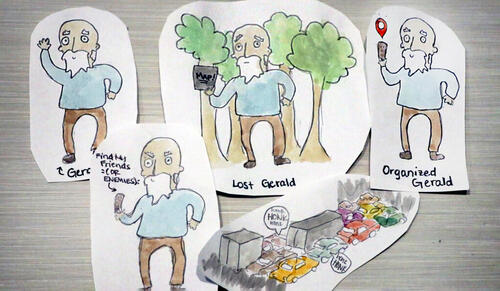
In the Yale College course “ASTR 160,” students received a compelling assignment: Create a short video explaining black hole physics.
Marla Geha recently sent her “ASTR 160” students back to the drawing board for some universal truths.
While aimed at non-science majors, the lecture course, formally known as “Frontiers and Controversy in Astrophysics,” challenged students to examine some profoundly complex scientific concepts. Each week they examined of-the-moment topics such as black holes, exoplanets, and rocket science.
But they also delved into science communication. For one assignment, for instance, students were asked to write up a proposal for a new NASA satellite. For another they crafted a news story about a newly discovered exoplanet.
When she got to the unit on black holes, Geha, a professor of astronomy and physics in the Faculty of Arts and Sciences, asked students to create short videos explaining some aspect of the topic.
“I had no idea what to expect, but when the videos started coming in, I was impressed,” Geha said. “So many of them were amazing.”
Sophomore history major Isaac Mukamal, who is assistant business manager of the campus singing group Mixed Company, created a video that explains gravity waves — ripples in space-time, in this case emanating from merging black holes — with the help of two black holes that he named Bill Hader and Barbara Hale. A relative novice at video production, Mukamal spent several days filming the piece, using a coat hanger to balance his smartphone over a whiteboard.
Mukamal paid particular attention to the narration. “Educational videos lacking interesting narration rarely receive the same attention as those with gripping voice-overs,” he said.
In terms of experience, sophomore Parisa Vaziri was at the other end of the science video spectrum. While still in high school in Plano, Texas, Vaziri’s science explainer videos on TikTok attracted 70,000 followers and media attention from Forbes, The Atlantic, NBC, NPR, and the Disney Channel.
For “ASTR 160,” she created a video on how black holes form.
“From a young age, I have always enjoyed watching NOVA ScienceNow with Neil deGrasse Tyson,” Vaziri said. “The way he would explain such complex topics about both outer space and the brain in a highly understandable way really captured my interest. When we learned about black holes in class, I was inspired to create a video about them, since I knew how much media attention they get in pop culture and how misunderstood they are.”
Sophomore Sophia Mitri Schloss, an actress with more than a dozen credits in TV and movie roles, put together a video on the science behind Global Positioning Systems. She centered the piece around some watercolor “doodles” she had created over the Thanksgiving break.
“I was excited to see this assignment in ‘ASTR 160’ because I’ve always really enjoyed watching educational videos,” she said. “I find the combination of visuals and audio incredibly helpful when learning confusing material. I’m interested in education and have found that creative projects — while perhaps not the first thought, especially in STEM courses — can be impactful.”
Meanwhile, sophomore Ethan Levinbook, editor-in-chief of L’Amuse-Bouche, Yale’s French-language journal, produced a short video primer on black hole formation. It was his first-ever attempt at a science explainer video, and, like many of his classmates, he had to rig up his smartphone over his pen-and-paper drawings.
Levinbook’s video featured a rendering of a “baby” star, a whiteboard portrait of theoretical physicist Subrahmanyan Chandrasekhar, and a soundtrack of “Mercury,” from Gustav Holst’s orchestral suite, “The Planets.”
“I have never had an assignment like this before,” Levinbook said. “Beyond figuring out how to film the video, I found it challenging to boil down such a complicated topic into a video of just a few minutes — and then to create drawings that would engage the viewer.”
This article is taken from the Yale News article of January 31, 2023 by Jim Shelton. Please see below for the original article and other related links.